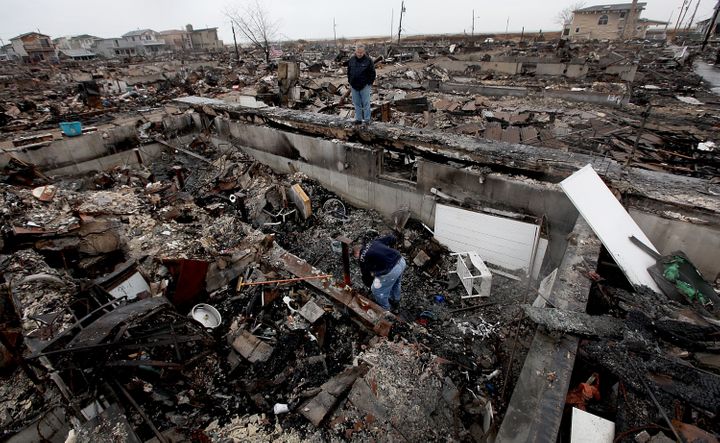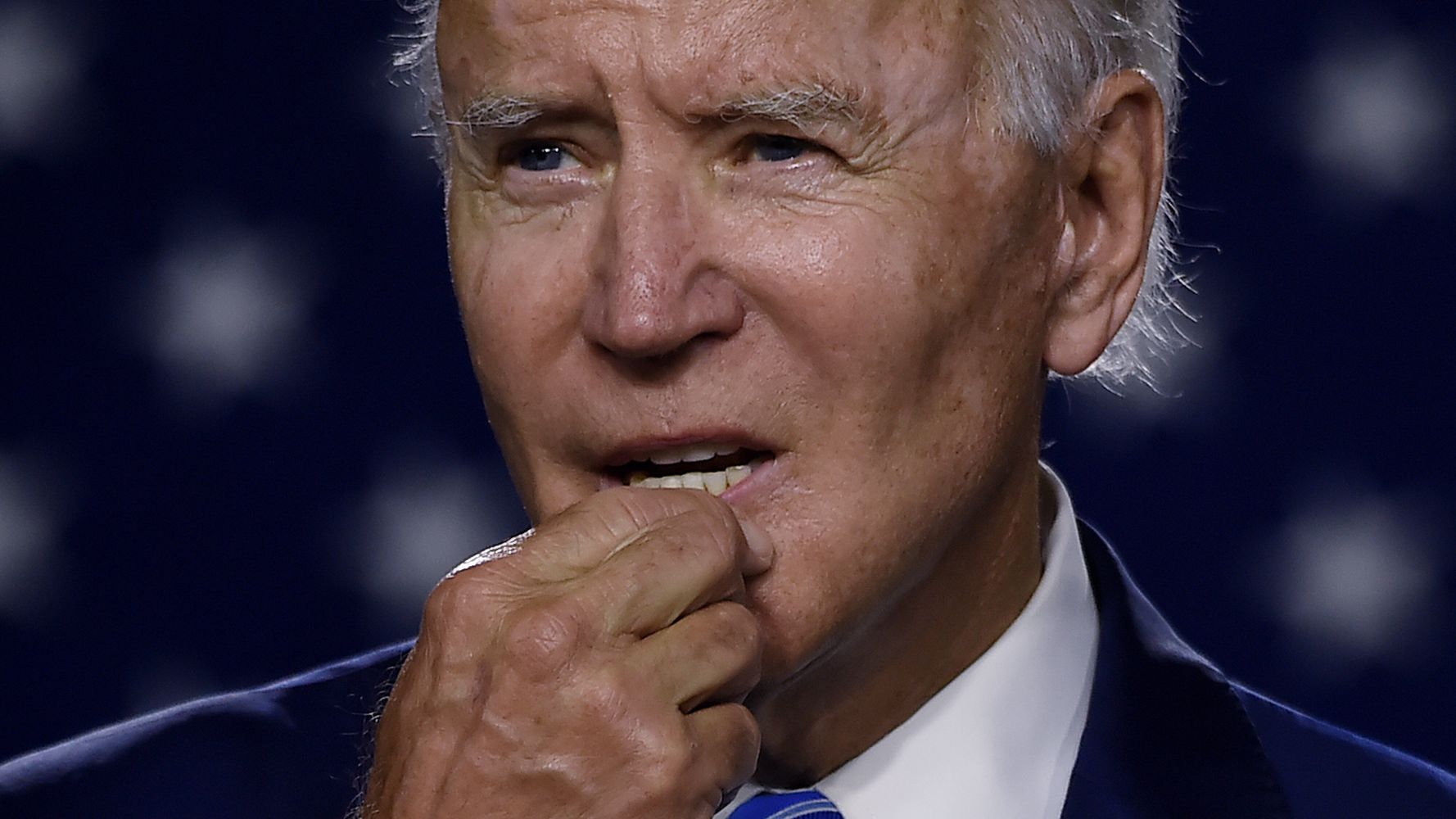[ad_1]
Democratic presidential candidate Joe Biden last week announced a new climate justice plan that would direct nearly half the benefits of its proposed $2 trillion clean electricity investment to poor and minority communities that have borne the brunt of fossil fuel pollution.
That concept came from the climate law New York passed last summer, setting the Empire State on a path to 100% carbon-free power by 2045. Biden’s plan goes even further, promising to phase out natural gas, coal and oil-fired power plants by 2035. New York’s law mandates that a minimum of 35% of benefits go to front-line communities, with the goal of 40%. The former vice president’s campaign set a firm target of 40%.
It’s a noble goal, and one activists say is key to winning popular support for the energy transition and addressing environmental racism. But there’s a problem: New York’s law isn’t yet working out as hoped, and that’s raising concerns about how the effort would scale nationally under a Biden administration.
The initial version of New York’s law directed 40% of New York’s clean energy “spending” ― an easy metric to track ― to front-line communities. But the final version lowered the guaranteed figure to “no less than 35%” and changed that language from “spending” to “benefits” ― a much less specific goal, and one that two state panels have been tasked with figuring out how to implement and measure. One of those panels was just established last month and has yet to meet. The other hasn’t even been formed.
Meanwhile, the state lacks any plan to coordinate different agencies around the mandate at a moment when the coronavirus pandemic is taking a disproportionate toll on the very communities the provision is meant to help. Now some advocates fear the budget gap the state faces due to COVID-19 could reduce the benefits polluted communities are due.

Last Friday, New York Renews, the coalition of 200 environmental and labor groups that spearheaded the legislation, called for an audit of all state agency spending to ensure that front-line communities are receiving 35% of climate-related funding. On Tuesday evening, climate activists protested at Democratic Gov. Andrew Cuomo’s Manhattan office to raise awareness of how the ongoing heat wave is putting poor New Yorkers at risk.
“This is not a joke,” said Raya Salter, a policy organizer for New York Renews and a member of the Climate Action Council, the state panel the law created to oversee its implementation. “The costs of delaying are not acceptable.”
The governor’s office did not respond to emailed questions.
The 22-member council is made up of advocates, utility chiefs and state agency officials, and has met just once, in early March, at a gathering the Albany Times Union described as “uneventful.” It’s that body that is ultimately responsible for devising how to calculate the benefits communities receive. Its environmental justice working group, which will discuss and recommend a system of accounting, only officially formed last month.
“They’re in the process of scheduling their meeting,” said Eddie Bautista, the executive director of the New York City Environmental Justice Alliance. “It’s Doodle poll Hell.”
The absence of a clearly defined mechanism to account for the benefits the law provides New Yorkers makes the working group that much more urgent, he said.
“What the law effectively did is made a squishier target harder to both confirm and hold the government accountable to,” he said.
Cuomo has yet to appoint names to a separate environmental justice advisory board with a broader, statewide mandate. That panel, formed under a companion piece of legislation, failed to even start planning last year because Cuomo waited until December to sign the bill, despite making no changes to the version the legislature passed in June, Bautista said.
“Nothing happened. I’m not sure why it took six months, but it did,” he said. “That’s six months that, in retrospect, had we known a pandemic was coming, we could have really used.”
The lack of a strategy to coordinate different agencies risks creating more obstacles for low-income New Yorkers seeking help amid the virus-induced economic depression. Establishing a system that allows households to enroll in multiple programs at once would “be a win-win, and make things real,” Salter said.
“If you’re qualified for the rent relief program, you should automatically qualify for the energy efficiency co-benefit there without having to apply twice,” she said. “There shouldn’t be another hoop.”
There are still promising signs the law is making a difference in how the Cuomo administration governs.
Say point-blank, without any confusion, that these investments will go directly to front-line communities.
Rahwa Ghirmatzion, executive director of Push Buffalo
In November, the New York State Energy Research and Development Authority’s proposal to expand the state’s solar incentive program was largely in line with the justice provisions in the new law. Bautista said he’s hopeful New York’s bid to overhaul the Regional Greenhouse Gas Initiative, the 11-state cap-and-trade system, will similarly comply with the mandate. The administration, meanwhile, has twice cited the law to block permits for new fossil fuel infrastructure, including the controversial gas project known as the Williams Pipeline.
On Tuesday, Cuomo’s office announced the “largest combined clean energy solicitations ever issued in the U.S., seeking up to 4,000 megawatts of renewable capacity.” The press release said the administration would “prioritize low-income census tracts and environmental justice areas.”
Biden’s proposal calls for using a climate justice screening tool, a mapping algorithm California regulators pioneered to track pollution and poverty, to implement its 40% pledge. His plan also aims to establish new federal offices to prosecute polluters and deliver new services to communities suffering from toxic air and water.
But Rahwa Ghirmatzion, executive director of the group Push Buffalo, said the candidate should consider adopting the initial language on spending to guarantee that more federal resources reach impoverished communities like those her nonprofit serves.
“Say point-blank, without any confusion, that these investments will go directly to front-line communities,” she said. “It’s always very vague.”
Predictions for mounting crises, meanwhile, are anything but. As officials struggle to contain the coronavirus pandemic and prepare for a historic wave of evictions and poverty, federal forecasters said the ongoing hurricane season in the Atlantic will likely see an uptick in extreme storms.
“I pray we don’t have another Superstorm Sandy in the months ahead,” Ghirmatzion said, referring to the devastating 2012 storm. “We don’t have time to waste.”
Calling all HuffPost superfans!
Sign up for membership to become a founding member and help shape HuffPost’s next chapter
[ad_2]
Source link

